Top 20 interesting cities in Spain
Colorful Spain is one of the warmest and sunniest destinations in Europe. But the country is actually quite big! You will have to choose which places and activities are most interesting to you. We hope our list of the 20 most attractive cities in Spain will help you.
Madrid
You can start a visit to Spain with any city, and each of them has interesting corners, deep history, excellent cuisine and great souvenirs. But we’ll start our list with the capital city, because Madrid is a city of contrasts! It has it all: government buildings, royal palaces, large green lungs in Retiro Park and Parque del Oeste, and countless bars where at night they sing and dance the Flamenco.
The incredible number of stores, museums, restaurants, theaters, cafes, Catholic churches and shady alleys will take your breath away. Madrid’s architecture is gorgeous in every neighborhood, but especially interesting in the old neighborhoods, where the locals live in houses built in the 19th century. Discover and love Madrid!
Barcelona
This port city on the Mediterranean is famous for Antoni Gaudi’s buildings, La Rambla and botifarra sausage. And Barcelona has an excellent theater schedule, which gives it a head start over any other Spanish city. In general, the capital of Catalonia has a special role in culture. Many Spanish writers, playwrights and artists are from here.
The landscape of Barcelona is not flat, and there are many viewpoints where you can enjoy a magnificent view, such as the mountains Tibidabo or Montjuic. Museums, parks, the unfinished Sagrada Familia, and just about any facade in the Gothic Quarter add up to create the unique charm of this city. The local white wine and fresh oysters that you can enjoy on sun-drenched terraces, even in February, insistently invite you to come back here again and again.
Seville
Some consider Seville to be the most beautiful city in Spain after Madrid. And not without reason. Beauty is a subjective notion, but Seville’s historical value can’t be denied. The site was founded by the Phoenicians 5,000 years ago. There’s plenty to see: the narrow streets, marble-paved courtyards, Moorish-style palaces and slums.
We can’t imagine Spain as a whole without two things that were born in Seville. One is flamenco, a fiery folk dance that emerged from the cramped streets of the Triana neighborhood. And the other is tapas, bar snacks that are often quite substantial. The food is bodily and spiritual. A Seville-style refreshment is the Tinto de Verano, a wine-based cocktail with lemon and soda.
Valencia
Going to Valencia is a must, if only to find out why the Moors called it paradise on Earth. And there are several reasons for that. For starters, the climate and the sea. Nature itself feels so vibrant and alive here, with gorgeous orange groves and soft white sand on the beaches. The sea near Valencia is also perfect for diving: the fauna of the volcanic islands of Columbretas is surprisingly rich.
Cultural activities and shopping in Valencia are also an important part any trip, but not during the siesta. The hours from 14:00 to 17:00 are a time of rest, and hardly anything will be open. So choose the right time to go shopping for the famous Valencian porcelain, rice liquor, chocolate-covered orange slices. Another gift to the world from Valencia is paella. Be sure to try this local dish in its historic homeland.
San Sebastian – Donostia
This small town in the Basque Country on the coast of the Bay of Biscay is convenient because it has its own international airport. Spanish kings loved to vacation here, and since 1953 the resort has hosted an annual international film festival. In the local Basque language San Sebastian is called Donostia, and it is the real architectural, cultural and gastronomic pearl of the Spanish Northeast.
We recommend getting lost in the maze of narrow streets in the Gros quarter in search of good dinner or pintxos (Basque tapas) and a lively nightlife. If you’d like to bask on the beach and not just stroll along the lush promenade, there are two magnificent beaches La Concha and Ondarreta – right in the city limits, which entice you to relax on the sand and in the clearest sea water.
Las Palmas de Gran Canaria
You may not believe it, but the capital of the Canary archipelago has a thriving nightlife as well as a thriving cultural scene. One of the main draws of traveling to Las Palmas, though, is the local gastronomy, which is dramatically different from the Mediterranean mainland. It’s not hard to find. There are plenty of cafes and nightclubs around the large Las Canteras beach, and plenty of international restaurants along the waterfront.
The sandy beach stretches in a semicircle from La Isleta Peninsula to the concert hall, which is named after local tenor Alfredo Kraus. The magnificent Doramas Park is home to the Nestor de la Torre Museum and the authentic Pueblo Canario canary courtyard, with its Bodegón restaurant. For shopping, you’ll want to stroll through the beautifully preserved Triana neighborhood. Don’t forget to visit Columbus’ cabin, where the famous traveler is said to have spent the night on his way to America.
Las Palmas de Gran Canaria: book hotel in
Cuenca
The town of Cuenca is famous for its hanging houses. Nowadays, these houses, hanging right over the Huécar River, are few in number. Three of them have been given to the Museum of Abstract Art and are open to the public. As early as the 16th century, these houses with their protruding wooden balconies were an object of admiration. Dutch painters such as Anton van den Wyngaerde depicted them in their paintings.
Since 1996, these houses have been part of the world heritage protected by UNESCO, along with the local Gothic cathedral and the ancient fortress wall. There are many churches in Cuenca, but most interesting is the fate of the ancient Dominican monastery of St. Paul (Convento de San Pablo), which stands directly opposite the hanging houses. The hotel Parador de Cuenca has been here since 1993, and you can stay there to further enjoy Cuenca’s unique, historical atmosphere. You can book a room at this link.
Alcala de Henares
Cervantes’ house and the ancient university set the tone for this small town that’s located just 45 minutes from Madrid. Playwright and writer Miguel de Cervantes is perhaps the most famous native of Alcalá de Henares.
His home, a two-story building with its classic square patio and well, is now a house-museum, where everyday objects from the 16th and 17th centuries are on display. The next door leads to the ancient hospital de Antezana, where, according to legend, Cervantes’ father practiced medicine.
The Plaza de Cervantes, the Archbishop’s palace, churches, parks, the Sunday market in the square and of course a stroll along the 800-year-old street Calle Mayor will make your visit unforgettable.
Alcalá de Henares: book hotel in
Segovia
Segovia is located in the hills and consists of winding streets with old sand-colored houses. At the confluence of two rivers, the Alcázar fortress, which vaguely resembles a Disney castle, was built almost a thousand years ago. This palace was the favorite resting place of Fernando of Aragon and Isabella of Castile, who united the independent kingdoms of the region into a single state.
It is impossible to miss the kilometer-long stone aqueduct in the Plaza Azoguejo. It is two thousand years old, and according to legend it was built in one night. Presidents and kings visiting Spain are invited to the Mesón de Cándido restaurant at the foot of the aqueduct. We recommend the best roast suckling pig in Segovia.
And in case there are fans of Spanish poetry among you, we should mention that there is the Antonio Machado House Museum in Segovia.
Toledo
Almost every city we tell you about is a UNESCO World Heritage Site, in whole or in part, and Toledo is not an exception. Here the cultures of three peoples, Christians, Sephardic Jews and Muslims, peacefully coexisting for centuries in this small area, are intertwined. Proof of this coexistence can be seen in the old Catholic churches, the synagogues and the remains of a mosque built over a thousand years ago.
There are plenty of shops in Toledo specializing in the sale of Toledo daggers as well as armor and other objects that accompanied the life of a true knight. The Alcázar of Toledo, the El Greco Museum, the castle walls, the museums of the three cultures, the towers, the monasteries, the stone bridges over the river… all this will take you back in time.
Burgos
There’s long been a bitter argument between Burgos and Leon over which city has the most beautiful cathedral. Be sure to visit each and see for yourself. Both cathedrals perfectly reflect the style of their time, but they are monuments of different eras, so it’s tough to make any real comparison.
And Burgos has a great advantage over any other Spanish city: it’s the birthplace of the great Cid, Rodrigo Diaz de Vivar, who devoted his life to the Reconquista. El Cid Campeador became famous not only from the 1961 Hollywood blockbuster; his story was known much earlier from the early 13th-century poem The Song of My Cid.
Both the equestrian monument to Cid and his tomb in the cathedral serve as places of pilgrimage in Burgos. After visiting the shrine in the square beside the cathedral, stop by any restaurant for the local morcilla sausage, famous all over the country.
Santander
The salty maritime scent of the Bay of Biscay pervades this northern Spanish city. Santander has long been thriving on colonial business, but since the mid-19th century it has become one of the most prestigious resorts in the country. In beauty and elegance it easily rivals San Sebastian. It has always been thought that the wealthiest Spaniards, including the king, would own summer residences in one or even both of these towns.
The airport now handles international flights and there are boat connections to Plymouth and Portsmouth, so this is a popular destination for British tourists. Visitors are attracted not only by the architecture and cuisine, which features fresh fish and seafood, but also by the beaches, El Sardinero or the Magdalena Peninsula.
Bilbao
Built in the 13th century, this port city is now the center of the province of Biscay in Basque country. It is a true cultural capital of northern Spain. Museums, exhibitions and festivals abound in the city. The ever-blooming Puppy at the entrance to the Guggenheim Bilbao museum of contemporary art is world-famous! And then there’s the interesting Basque Museum and the opulent Museum of Fine Arts.
The highlight of Bilbao’s cultural scene is Aste Nagusia, when for nine days in August, the mayor’s office stages an exciting display of cultural activities. On the last day of the festival, giant puppets are burnt, just like in the Mardi Gras carnival.
Zaragoza
The ancient capital of the Kingdom of Aragon is still majestic and rich today. It had its own modernists who built amazing houses comparable to Gaudi in Barcelona. La Casa de los Azulejos, for example, is a striking and unusual building with exquisite mosaic cladding.
The biggest event in the city is the celebration in honor of Saint Pilar, the city’s patron saint, which takes place annually on the 12th of October and fills all the main squares and streets.
In the center of the city are the ruins of a Roman theater, which isn’t surprising when you consider that the city was founded by the Roman Emperor Octavian Augustus. Zaragoza has also found a place in modern international business. Expo Zaragoza was held here in 2008.
Santiago de Compostela
The Way of St. James (El Camino de Santiago), the path to the relics of the Apostle, leads to the cathedral in this ancient city. At all times of the year pilgrims walk along this path. Pilgrims often have a scallop shell, a symbol of the saint, on their backpack, staff or hat.
Popular in the Middle Ages, the pilgrimage route became of great importance to world tourism and was the first hiking route to be added to the UNESCO World Heritage List. Today, many hikers break up the hundreds or thousands of kilometres into sections and walk it in parts during their holidays.
In Santiago de Compostela the religious and touristic atmosphere is mainly centered around the cathedral. Otherwise it doesn’t differ much from other Galician cities, with ancient monuments, museums, parks and excellent cuisine at every step.
Santiago de Compostela: book hotel in
Merida
Merida was founded by the Romans in 25 BC. Today it is a small town, but in Roman times it was the capital of the province of Lusitania, which included the entire western portion of the Iberian Peninsula. Merida has preserved both its Roman name (Emerita Augusta) and the Roman theater, which is still used for its intended purpose – the annual grand festival of classical theater is held here.
The ruins of a Roman settlement with an aqueduct, circus, bridge, temple of Diana and the Arch of Trajan (El conjunto arqueológico de Mérida), protected by UNESCO, also attract tourists. Merida’s Roman past is also evident in the numerous artifacts from that era, which are regularly found by local farmers while tilling the fields.
Granada
The Andalusian city of Granada is famous for the museum complex La Alhambra and its gardens, which tower over the city’s modern buildings. This UNESCO-protected museum is extremely interesting to see not only from the inside, but also from the outside, with a unique fortress wall. A walk around the castle doesn’t take long and provides an idea of the castle’s inaccessibility.
The city was a part of the Muslim kingdom of Nazarí for a long time, until the Catholic Kings Fernando and Isabella took it back during the Reconquista. The Renaissance cathedral and the Royal Chapel are also worth a visit.We also recommend visiting the area of La Alpujarra, not far from Granada, where picturesque white villages on the slopes of the Sierra Nevada await you. If you’re traveling in winter, don’t forget your skis: the slopes here are excellent.
Cordoba
The city of three cultures, founded by the Romans in the 2nd century B.C., consistently attracts tourists from all over the world, and photos of the local mosque-sobor have a place of honor on the pages of Spanish history books. We recommend coming here in spring, when the orange trees are in bloom. The orange courtyard in front of this unusual building is fragrant with white flowers, which in the old days were used to decorate the hair of Spanish brides on their wedding day.
Start your visit to Cordoba with the aforementioned cathedral, which has preserved its original structure and many of the decorative elements of the former mosque. Then don’t forget to visit the Roman bridge, theater and temple, as well as the ancient walled Sephardic district of La Judería. And that’s not all you’ll see.
Figueres
This small Catalan city is famous all over the world for its extraordinary Salvador Dali Theater-Museum. The city itself, which was founded long before the Romans, changed hands many times before it fell to the Visigoths. Figueres has preserved some of the buildings of that era. And the most important monument of Visigoth architecture is the tower Gorgol (Galatea), which Dali turned into a museum building.
Dali himself was born in this city, and nowadays one of the squares bears the name of the artist and his wife Elena Diakonova, who went down in history as Gala (Plaça Gala i Salvador Dalí). There are other attractions in Figueres, but most Spanish and foreign tourists are attracted by the collection of art objects in this surrealistic labyrinth.
Salamanca
An ancient settlement was founded here back in the Iron Age, and now it has grown into a university city with a youthful atmosphere. That university is the oldest in Spain, accepting students since 1218. During its 2700 years of history Salamanca has seen a lot of invaders, but during the last 500 years the true Castilian spirit has reigned here.
Temples, monasteries and secular buildings designed by prominent Spanish architects are protected by the state and UNESCO. They include, for example, the famous La Casa de las Conchas.
In the main square of Salamanca (Plaza Mayor), the same young people who attend university walk from bar to bar in search of free snacks. You can eat here without ordering anything but a drink, because your beverage will come with generous tapas, much bigger than Madrid’s treats.
We have listed the most beautiful and interesting cities in Spain, but there’s so much more to see in the diverse country. We didn’t include La Coruña on the Atlantic Ocean, Leon with its majestic cathedral and the birthplace of Queen Leticia Oviedo. And many more lesser-known gems are scattered throughout the lands of Spain! We will try to introduce you to the best places. Let us know in the comments which cities you want to read about.
Have a wonderful trip to Spain!

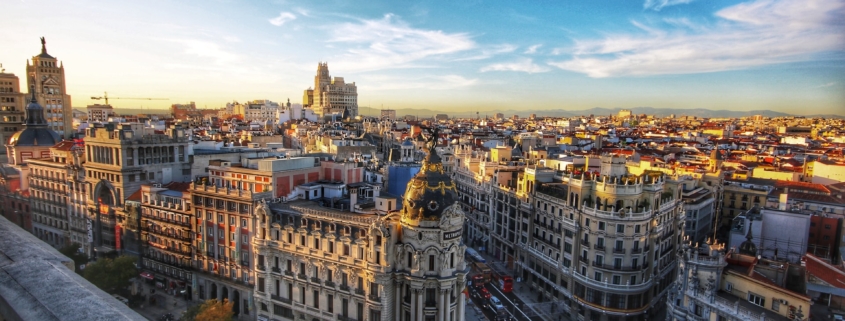 Jorge Fernandez / Unsplash
Jorge Fernandez / Unsplash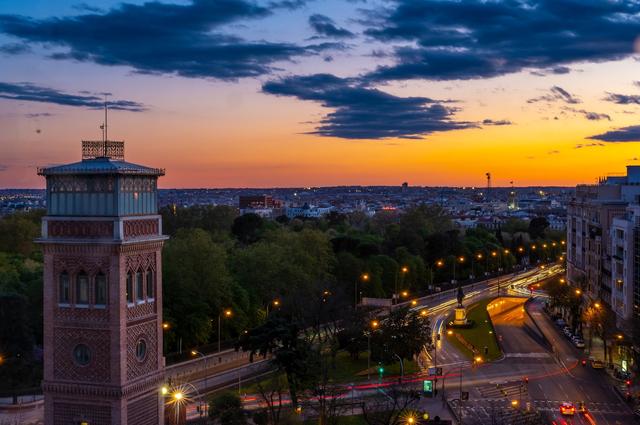
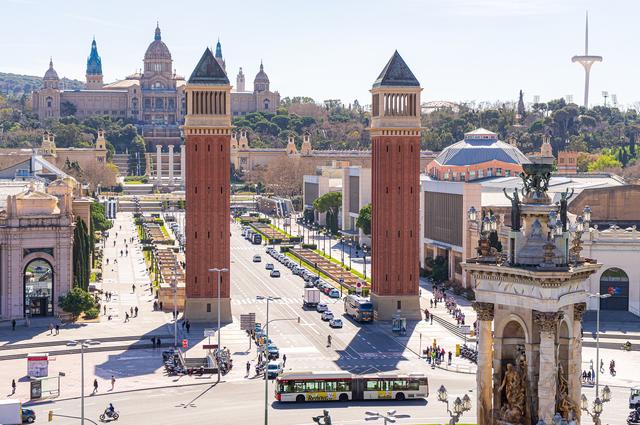
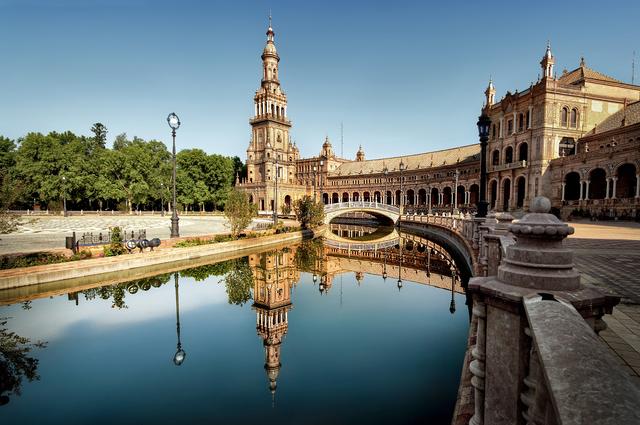
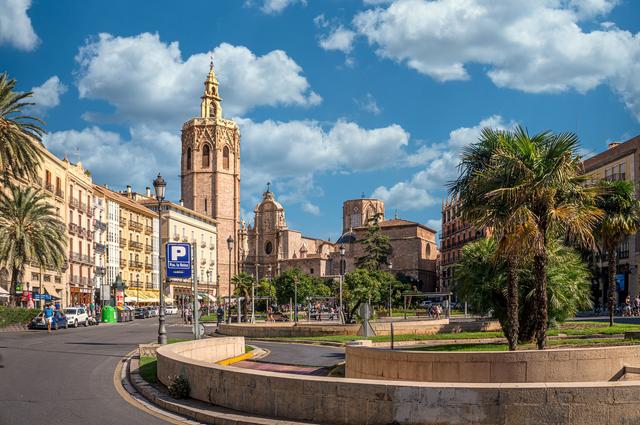
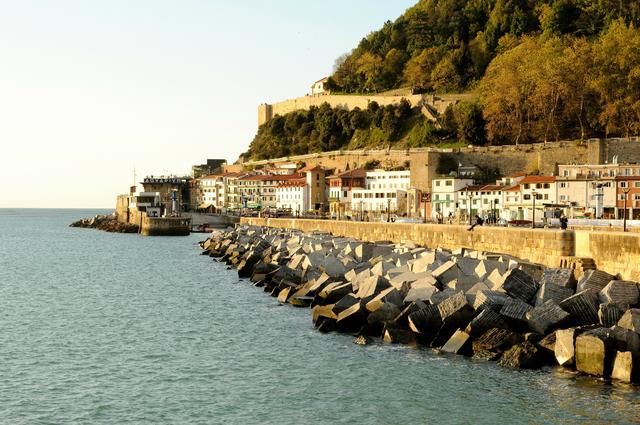
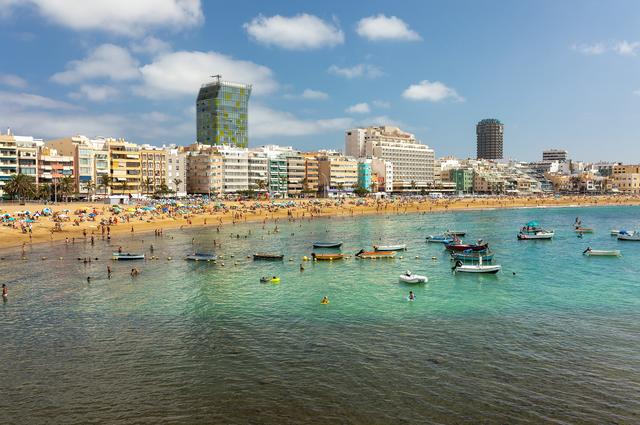
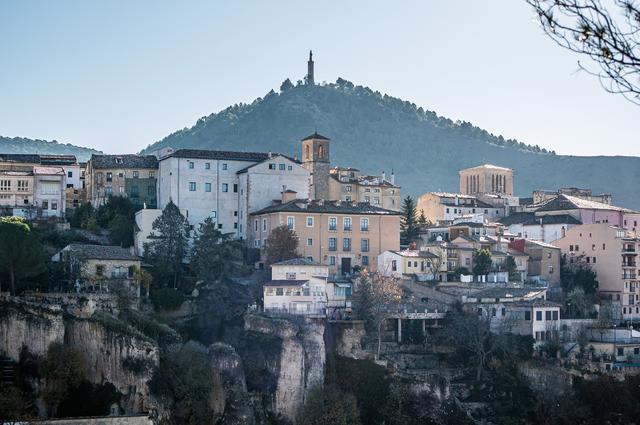
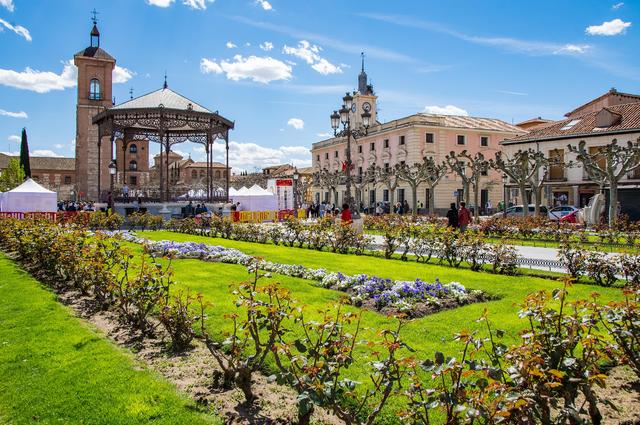
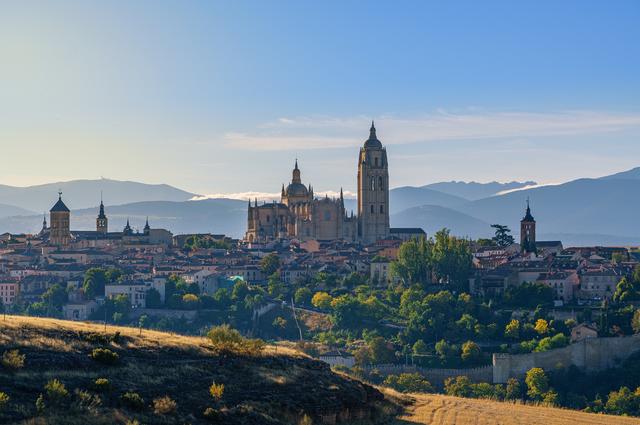
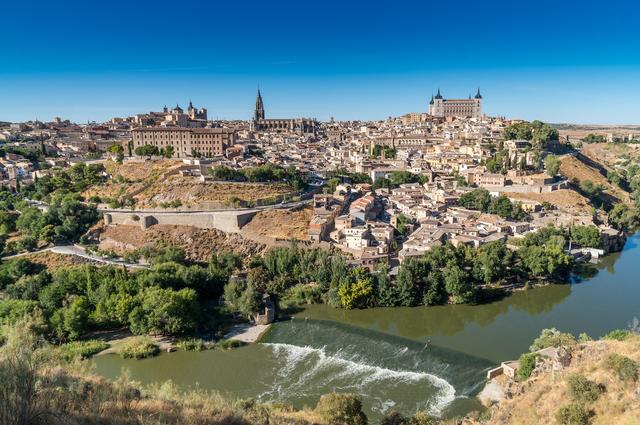
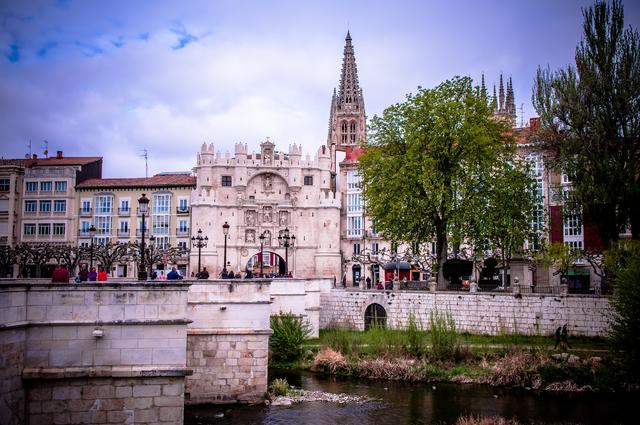
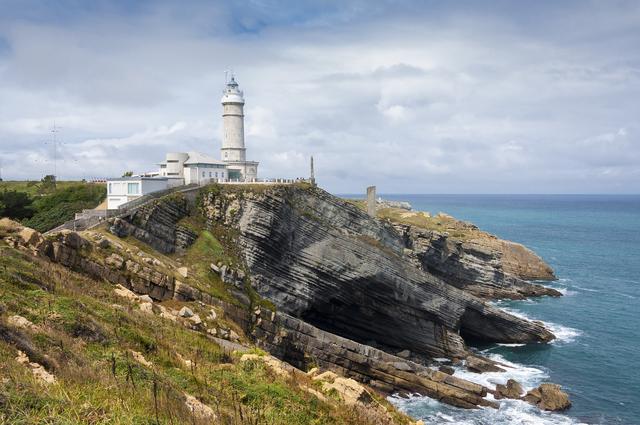
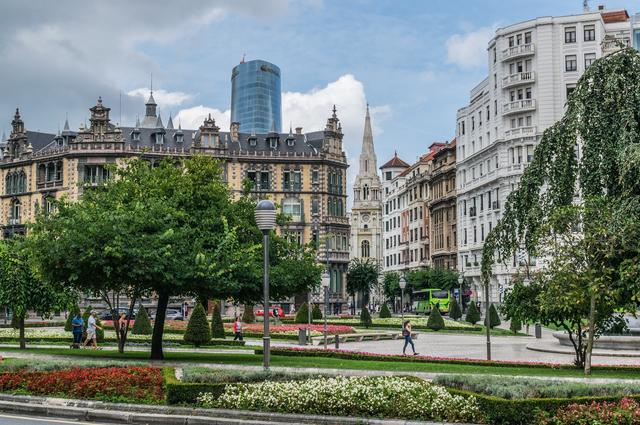
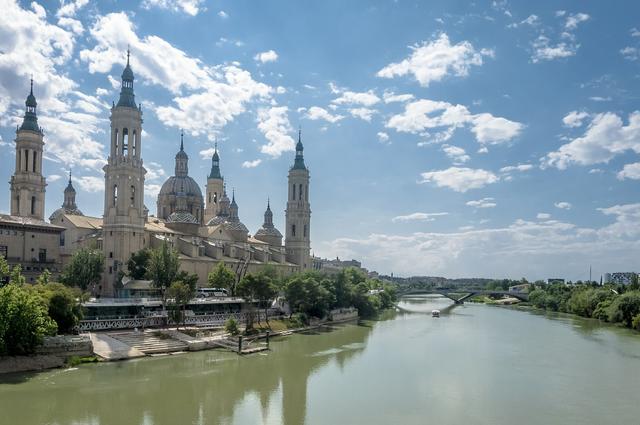
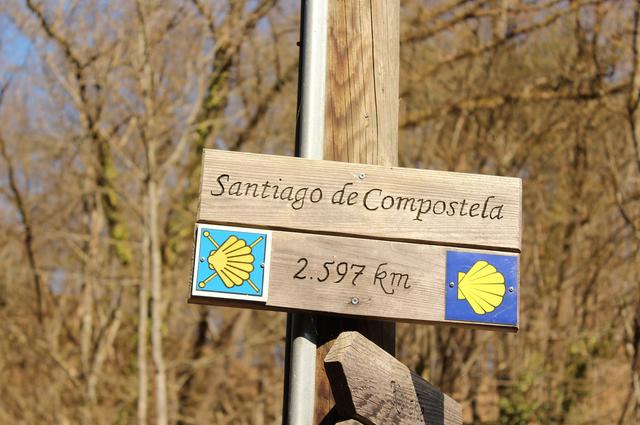
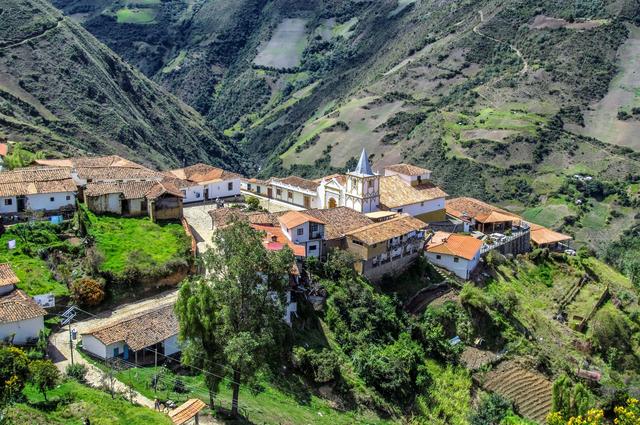
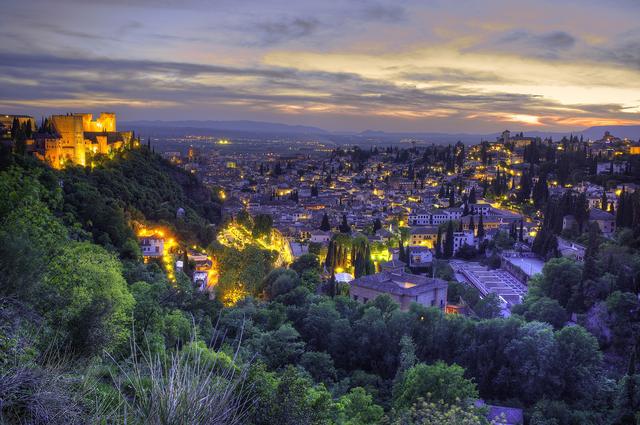
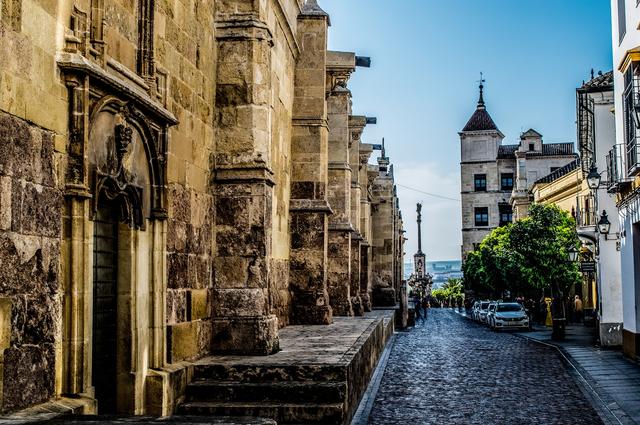
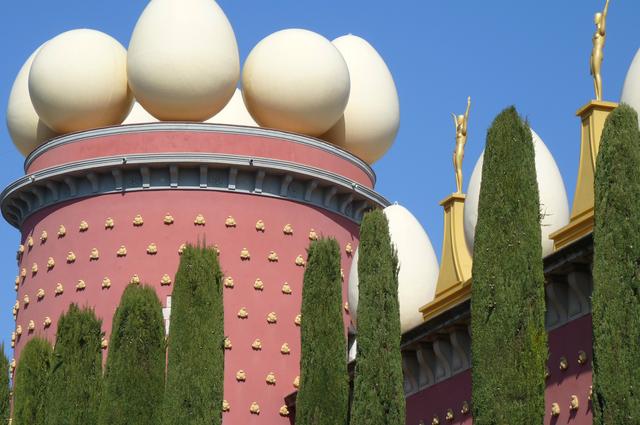
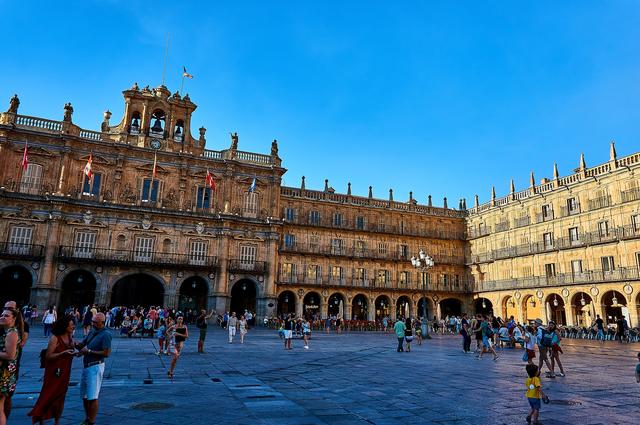
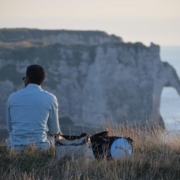 Kilyan Sockalingum / Unsplash
Kilyan Sockalingum / Unsplash 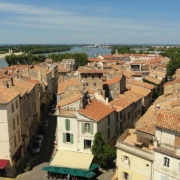
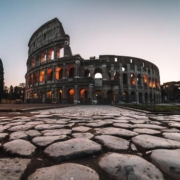
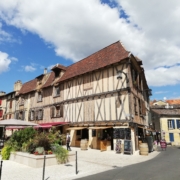 Eugene Tassart / Voyage10.com
Eugene Tassart / Voyage10.com 
 Jonathan Ybema / Unsplash
Jonathan Ybema / Unsplash  Public domain
Public domain Martin Katler / Unsplash
Martin Katler / Unsplash
Leave a Reply
Want to join the discussion?Feel free to contribute!